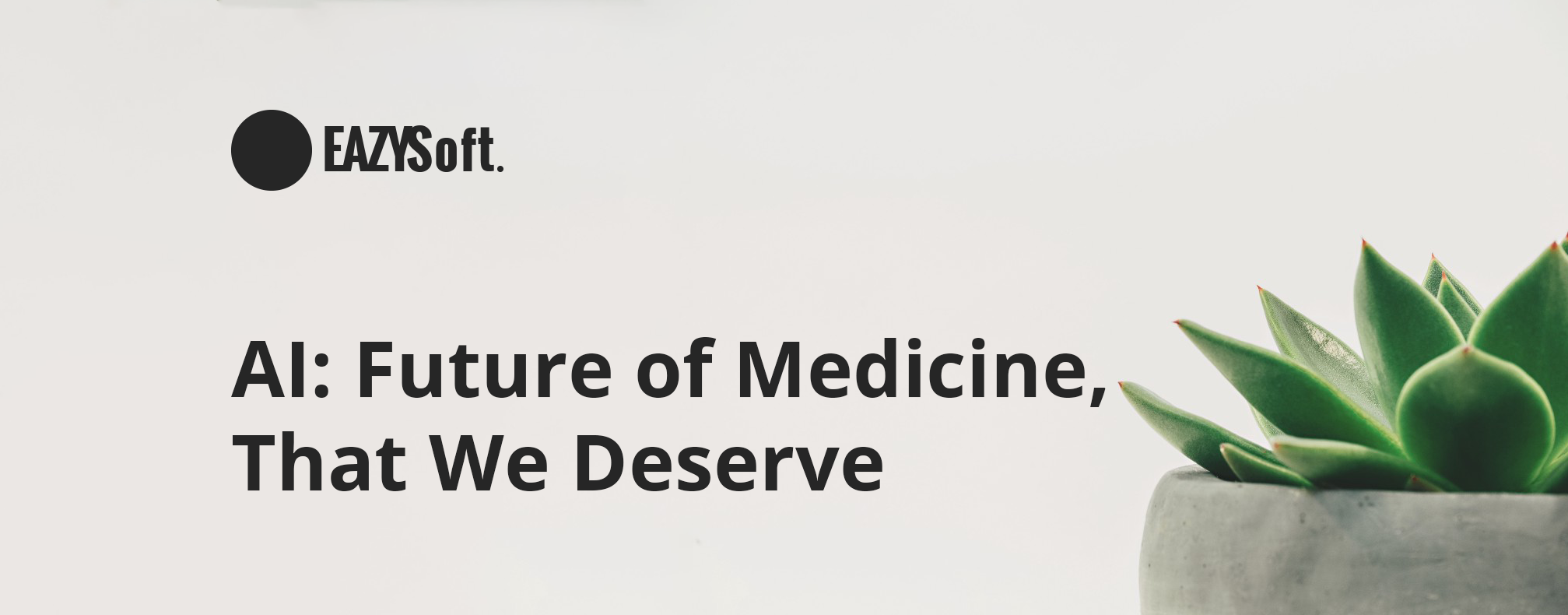
AI: Future of Medicine, That We Deserve
Thanks to the digital revolution, medical professionals don’t have to memorize nearly as much information as they did 50 years ago. Digital technology has liberated physicians, nurses and researchers to focus more mental energy on higher-level cognitive tasks and patient care. Artificial intelligence is poised to take this to the next level.
Advanced technologies have invaded almost every aspect of life and the healthcare field is no exception to this invasion. Artificial intelligence (AI) has erupted across several industries in the last few years and its impact on the healthcare sector, especially in medical imaging and radiology, is very evident. It has a vast potential in medical imaging ranging from enhanced diagnosis and improved workflow to a revolutionary transformation in the role of a radiologist.
Computers allow us to optimize our decision-making faculties by granting us easier access to information that is critically relevant to a decision while sorting out non-relevant facts or data. Humans now spend less time trying to decide what information to look at and can spend more time applying our minds’ higher-level computational abilities to the information before us.
AI offers a number of advantages over traditional analytics and clinical decision-making techniques. Learning algorithms can become more precise and accurate as they interact with training data, allowing humans to gain unprecedented insights into diagnostics, care processes, treatment variability, and patient outcomes.
How Will AI Revolutionize Medical Imaging?
AI will deal with the challenges faced by the medical imaging field today and bring about a positive transformation. Here’s how Artificial Intelligence is likely to change the way in which medical imaging is perceived and delivered:
1. Automated Interpretation of Images
A general AI with the capability of request interpretation, doing complicated perceptual and sorting assignments, and later framing a meaningful report is still far off. As of now, these tasks are performed by humans, but it is highly challenging for machines at present. Like the other fields, medical imaging has to plan cleverly for a future wherein AI can assist the diagnostic team. In future, this technology can take up tasks that make the job of a radiologist easier.
2. Support Radiologists in Their Decisions
Few years down the lane, radiologists will still go on with doing a major part of interpreting images. Besides the capabilities of a trained human to interpret subtle and complex discoveries on diagnostic pictures, radiologists give meaningful reports using their experience. But still, there are frequent discrepancies in reporting and in most cases human factors are the reasons. Artificial Intelligence offers several ways to enhance safety margins like understanding to recognize cases with higher error risk. Using image metadata and natural language processing could be a great step towards cutting down malpractice costs and errors by giving a decision support outline that learns continuously from global adverse events.
3. Risk Stratification
Imaging is a rich source of data for diagnosing diseases, but predicting precisely about the progress of a disease is dependent on several features at various levels, which is beyond the human perception. Automatic risk stratification could prove to be a very effective tool for identifying patients at high risk so that optimal care can be provided. Supervised machine learning is great technique for this. Machine learning improves what imaging provides and enhances the role of imaging in prognosis much beyond the usual disease staging. In future, we might find radiologists who assimilate health data and suggest treatment plans.
Artificial Intelligence is maturing science which have applications in different fields including medicinal services framework. Advance of counterfeit consciousness has diminished the human endeavours and at last prompts to simple and quick, practical finding of different frightful ailments. Manmade brainpower is likewise useful to watch out for the everyday schedule life. The essential part of Artificial Intelligence in patient care is quiet finding and picture examination, the future holds incredible potential for applying AI to enhance numerous parts of the patient care handle.
